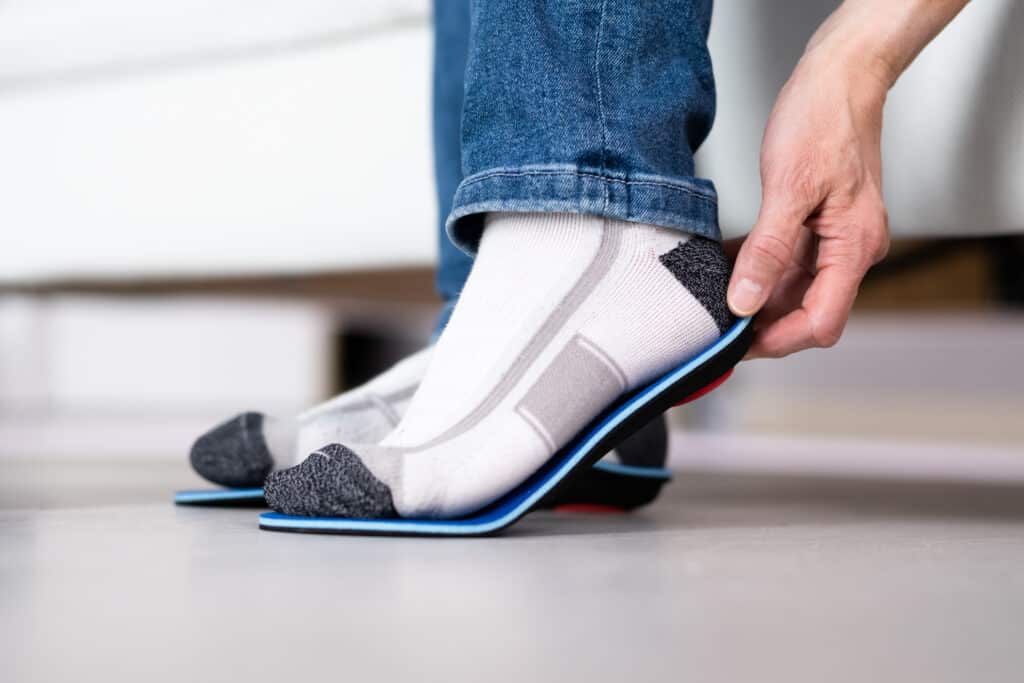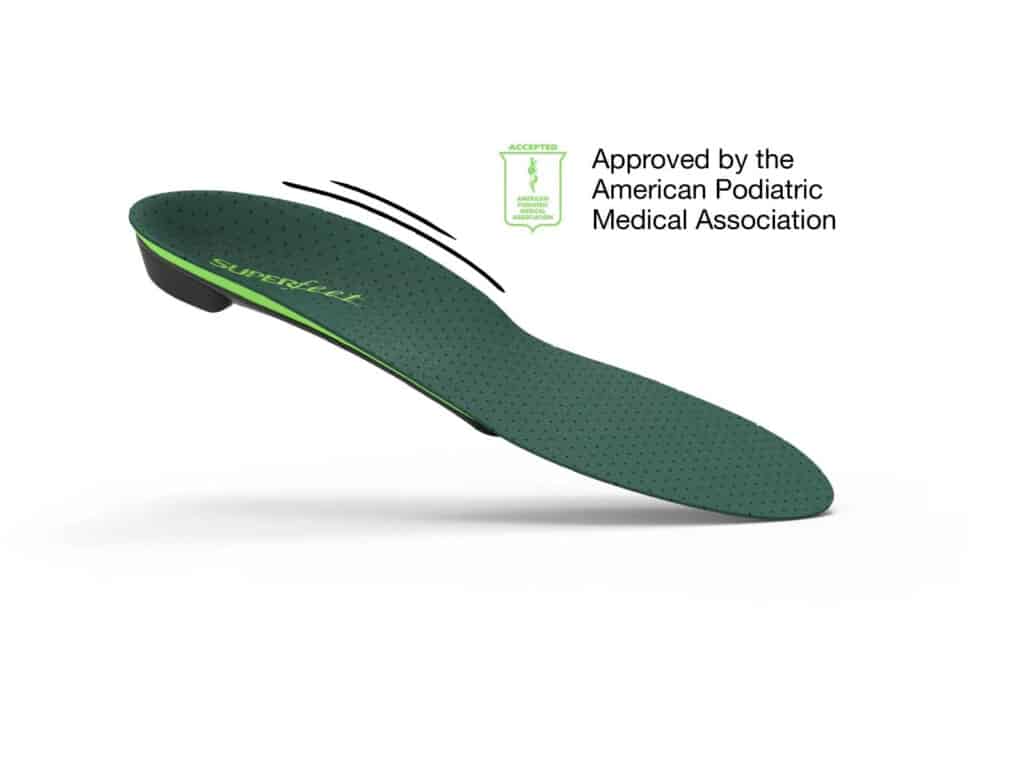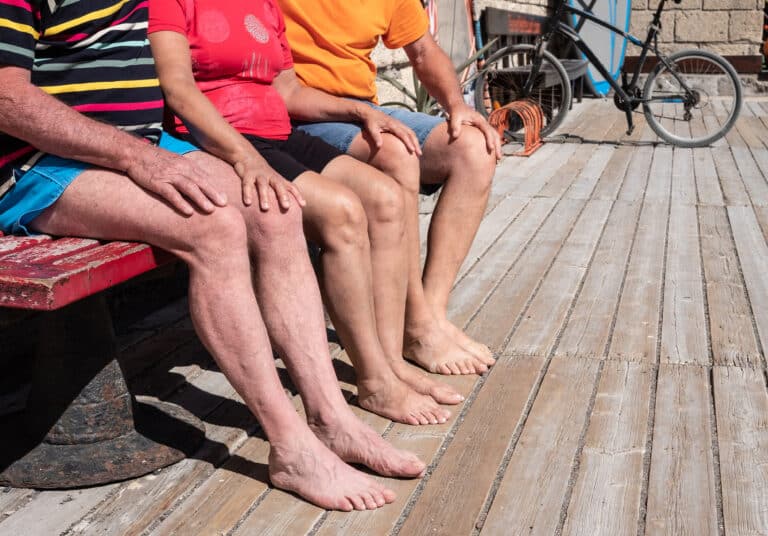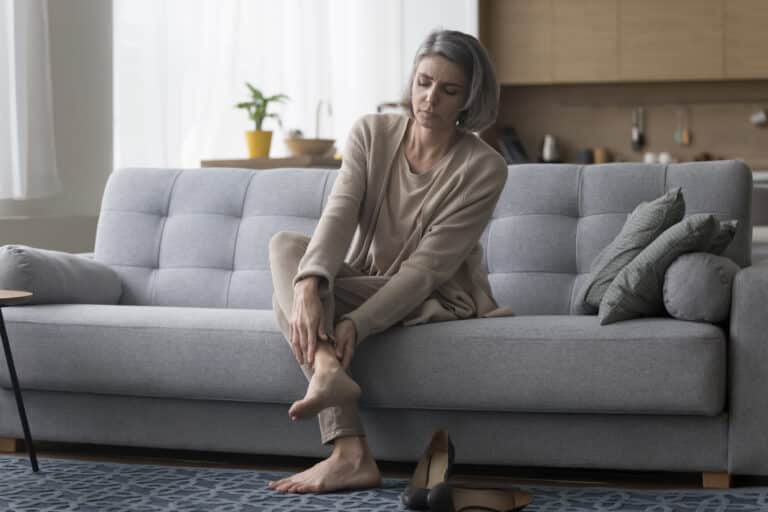Low back, knee and foot pain are common concerns for many older adults. As we age, finding strategies to help limit and prevent musculoskeletal pain becomes even more important. One popular solution for these problems is using arch supports or shoe inserts, also known as orthotics.
Should older adults use arch supports and shoe inserts? If so, which ones are appropriate for you?
It’s best to learn more about how these products work, what conditions they can be used for, and how they fit into the bigger picture of staying mobile throughout your years.
What Are Shoe Orthotics?
Orthotics are devices made to be inserted into your shoes that provide cushioning and support for different parts of your foot. They can be purchased prefabricated over the counter (OTC) or made custom to the shape of your foot.
Orthotics are a popular option for seniors to help with various conditions. The main goal of orthotics is to make the mechanics of your foot more comfortable while standing, walking, or running. Although there is some debate about their overall efficacy, many people who use orthotics report less pain and improved quality of life.1
Having worked with people of all ages on performance and general wellness, I have personally seen many patients get measurable benefits from using orthotics for short-term and long-term purposes.
Let’s examine how orthotics work and whether they are right for you.
How Orthotics Work
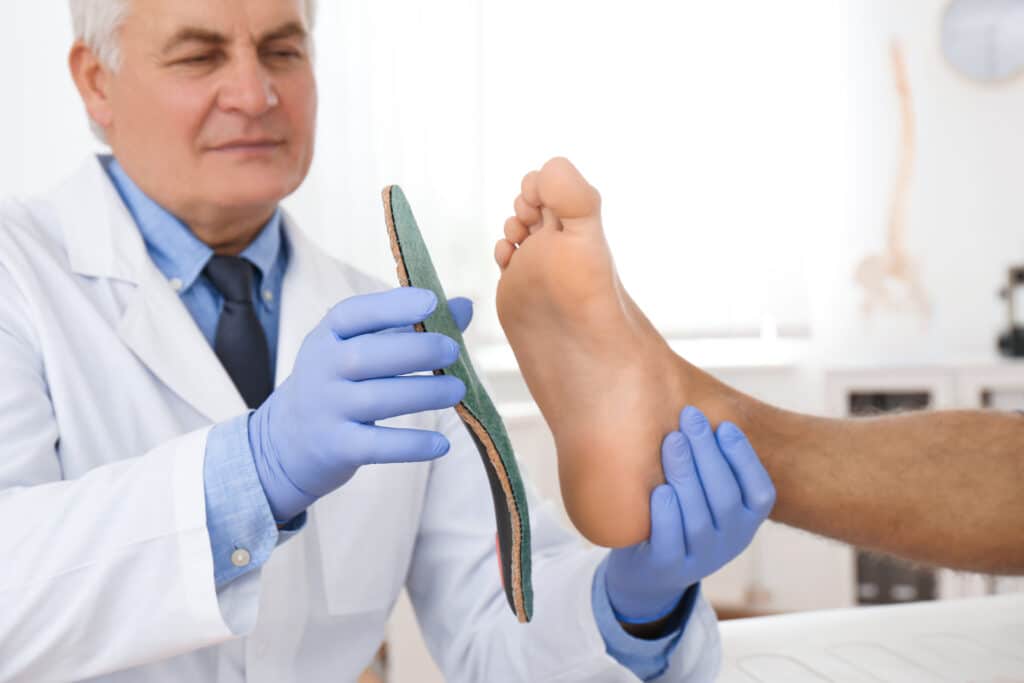
Orthotics are designed to give your feet more support where it’s needed for better comfort or performance. They provide the benefits of better movement, which leads to less pain, so you can remain active.
These benefits have two primary stages:
- First, orthotics change the surface under your foot bones, redistributing forces during each step leading to less pain. This can balance the use of muscles and tendons in your feet by promoting symmetrical muscle activation and appropriate tendon stress, resulting in less pain.
- Second, they often result in the user feeling better, which can motivate older adults to exercise and resume activities they enjoy. Staying active helps maintain and improve muscle strength, joint health, and quality of life.
Finding the best insoles for your condition can significantly affect how you move and feel during your day. Many older adults note that less pain motivates them to participate in exercise or the activities they enjoy.
What Conditions Can Be Treated with Shoe Inserts?
Although there are many conditions that orthotics are used to treat, three common conditions are plantar fasciitis, pes cavus—or high arches—and hallux valgus, also known as a bunion.2
Plantar Fasciitis
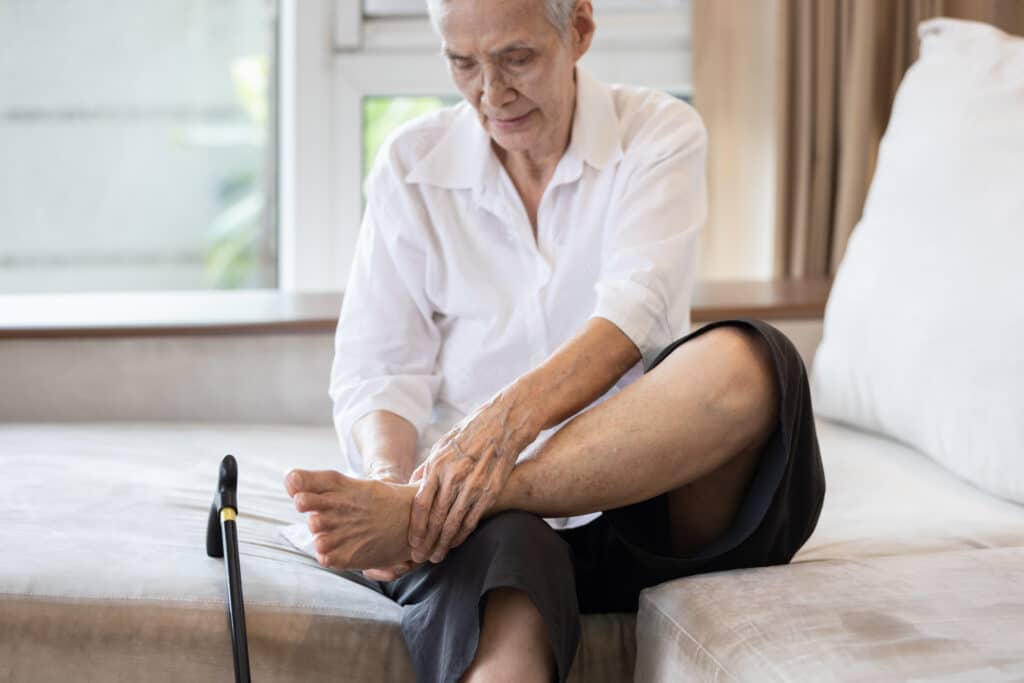
Plantar fasciitis is a term used to describe pain on the bottom of your foot due to irritation of your plantar fascia, a thick band of connective tissue that runs from your heel to the base of your toes.
Plantar fasciitis is a common problem for seniors that can be influenced by your shoes and how you walk. For this reason, plantar fasciitis insoles are very popular. Orthotics may help manage plantar fasciitis in several ways depending on the specific orthotics used.
For example, orthotics may help by providing extra cushion to the heel, redistributing force off of the plantar fascia, and increasing activation of specific muscles in the leg to support the arch of your foot better.
High Arches
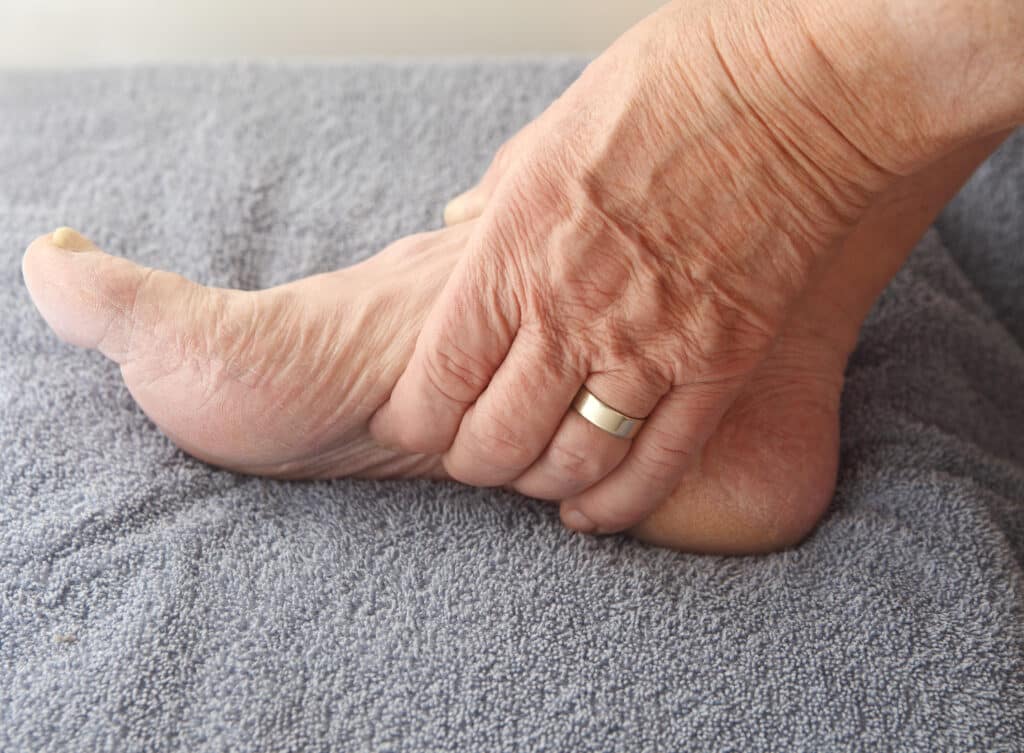
While many of us struggle with low arches or “flat feet,” some older adults face the opposite challenge. High arches (or pes cavus) mean that the arch of your foot is relatively high off the ground at rest while standing.
This can become a problem for some people because the arch sits above the usual support that standard shoe soles provide, which leads to pain and discomfort from increased stress through the arch.
Orthotics may help with pes cavus by providing more support underneath the arches of your feet, which can help to reduce the load through your arches during each step.
This is important for older adults who have been told they don’t need arch support because they already have high arches. They may benefit from more support than some friends with low arches.
Remember, every person’s response to orthotics will be different, so it’s essential to focus on what works for you to find the best insoles for your situation.
Bunion
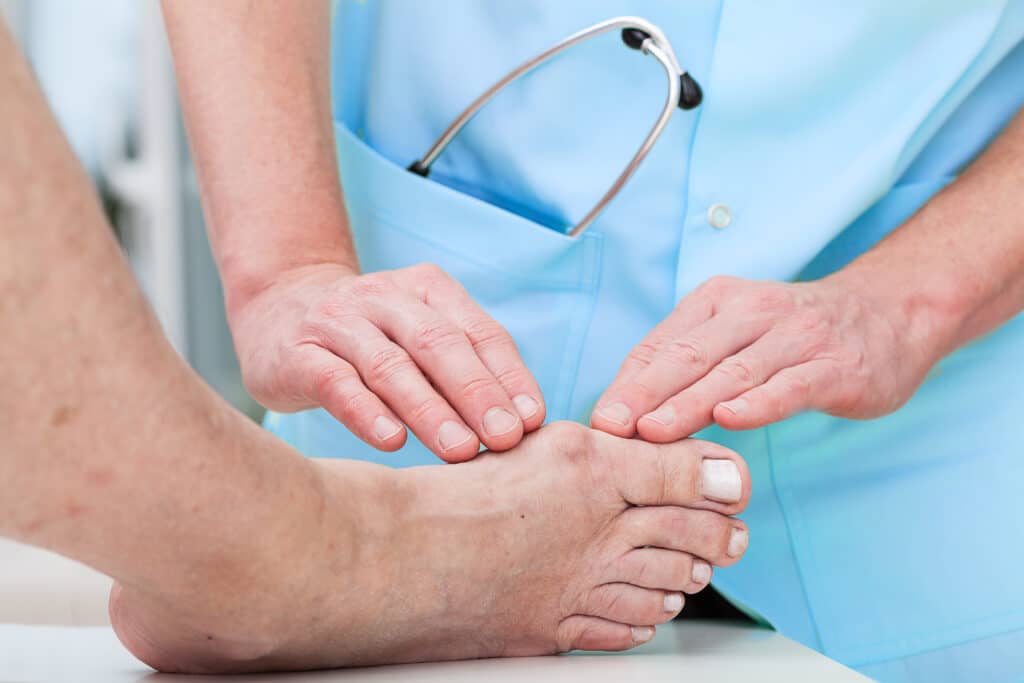
The term hallux valgus describes repositioning your big toe towards your second toe.
Commonly referred to as a bunion, this condition involves a bump that gradually develops on the inner edge of your foot at the base of your big toe. This new position of the big toe and resulting bump can change how you walk and may become very painful for some seniors.
Although there are few treatments for bunions, orthotics are commonly used to reduce pain and improve walking mechanics. This can be done by increasing support under the bunion itself or by providing more arch support to limit the amount of stress through the base of the big toe.
Many older adults also opt for a type of orthotic called a toe spacer, which sits between your big toe and second toe to help reposition the big toe during walking.
Lower Back Pain
In my clinical experience, I have worked with several patients who have benefitted from using orthotics to manage their lower back pain. It should be noted that although orthotics are commonly recommended for low back pain, little scientific evidence supports this use.
Regardless, for older adults grappling with lower back pain, orthotics might offer a surprising source of relief. Inserts work by correcting foot alignment, which can have a ripple effect up to the lower back, alleviating discomfort.
By ensuring proper foot posture, orthotics help distribute pressure evenly across the foot, reducing the strain on the lower back during activities like walking or standing. It’s a subtle yet effective way to address back pain, emphasizing the interconnectedness of our body’s mechanics.
However, it’s always wise to consult a healthcare professional to see if orthotics could be a beneficial addition to your lower back pain management strategy.
Types of Shoe Inserts and Orthotics
While many people discuss the benefits of orthotics, knowing which orthotics are being discussed is essential. The most common types of orthotics are over-the-counter inserts and custom orthotics.
Over-The-Counter Inserts
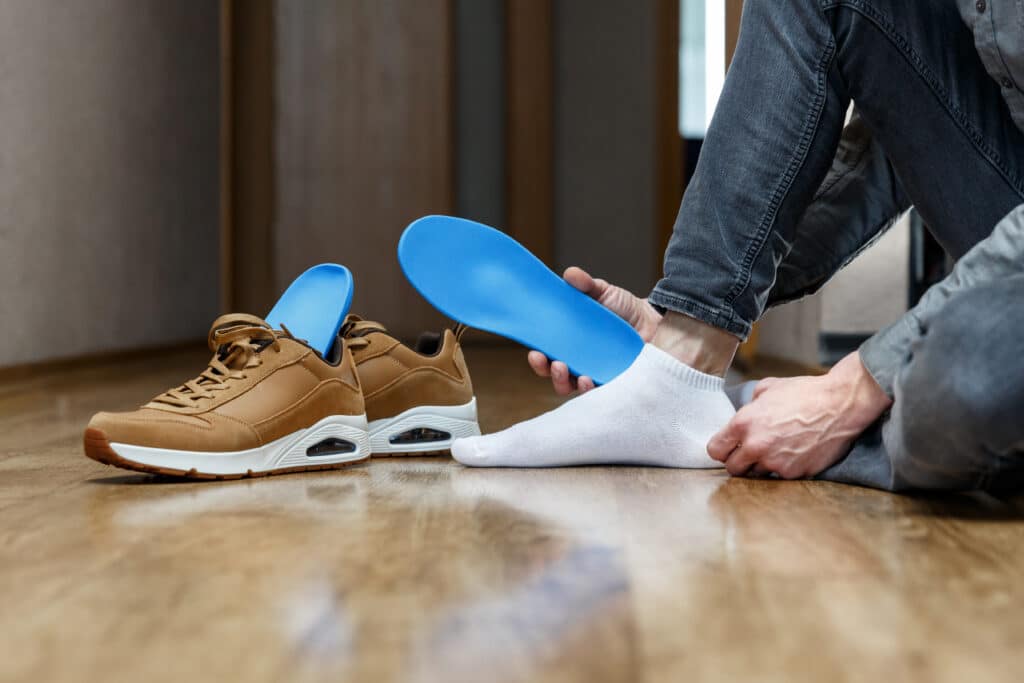
Many seniors have tried prefabricated, over-the-counter inserts. These can be bought at most stores for under fifty dollars, making them a popular and affordable option.
Over-the-counter inserts offer cushion and arch support, providing relief for many without customization. Many brands are available, and some doctors prescribe them for foot pain.
In recent years, newer companies have started offering a more comprehensive range of prefabricated inserts to address foot profiles typically associated with specific foot problems—for example, plantar fasciitis insoles. However, these inserts are not considered “custom” because they are still designed to be worn by almost anyone.
Knowing what you get when you opt for over-the-counter insoles is important. For example, many brands, like Dr. Scholl’s, are well-known for offering padded insoles, primarily providing a softer surface for your feet.
Alternatively, brands such as Superfeet are known for providing more structural support under your foot to help modify how your foot moves with each step. Your needs will depend on your specific condition and your stage in the rehabilitation process.
OUR RECOMMENDATION
If you are looking for an over-the-counter solution, we highly recommend Superfeet Orthopedic Insoles. We carry the same brand of insoles at our physical therapy clinics for our patients. What we like best is how supportive they are in the arch of the foot, where many lesser brands just provide padding. These make a genuine difference in pain relief. They also have this great Insole Selector that will match the right type of support for your needs.
Custom Orthotics
Custom orthotics are another prevalent option for seniors in today’s world. Contrary to over-the-counter prefabricated orthotics, custom orthotics are designed to accommodate the shape of your foot and are usually prescribed by a podiatrist or physical therapist.
The most significant benefit of custom orthotics is that they are designed with your specific foot shape in mind, unlike OTC orthotics, which are built for most people and most shoes.
Since doctors often prescribe custom orthotics, you also benefit from expert opinion during the fitting process.
Getting Fitted for Custom Orthotics
While custom orthotics have traditionally been fitted using a plaster casting method, newer technology allows for 3D scanning of your foot for a more precise design. Some companies can send an impression foam to you, which you step on and then send back to have a custom-fitted orthotic fabricated for you.
However, custom orthotics are expensive. The fitting and fabrication process requires considerable resources, so custom orthotics typically cost between three and five hundred dollars.
Custom vs. OTC Orthotics
Over-the-counter inserts are widely available; many are manufactured to be universal and affordable. That being said, there might be better options than a one-size-fits-all approach, especially if you have chronic or severe pain or have been diagnosed with a specific condition.
When considering the higher cost of custom orthotics, it’s important to remember that you’re also paying for expertise and specificity. Custom orthotics are built for you, just as eyeglasses are created specifically for your vision. They are carefully fitted and designed to fit your anatomy by experts, so you can be sure they will treat your condition as needed.
It’s also worth noting that custom-made orthotics tend to be more durable. Where you might buy and eventually dispose of several OTC inserts, a single set of custom orthotics may last just as long and cost roughly the same amount.
Whether you think that custom orthotics are the right choice or you have found success with over-the-counter inserts in the past, the choice depends on your condition, first and foremost.
The Break-In Period
Whatever type of orthotics you determine are right for you, it’s important to settle in slowly.
Introducing new orthotics into your daily routine requires adjustment to avoid discomfort. Start by wearing them for just a few hours on the first day, gradually increasing the duration each day.
If you experience discomfort, it’s a signal to reduce wear time and consult with a healthcare professional. Generally, allow up to two weeks to fully adjust to your new orthotics, listening to your body’s feedback throughout the process. This careful approach ensures a smoother transition to improved support and alignment provided by your orthotics.
Other Options to Treat These Issues
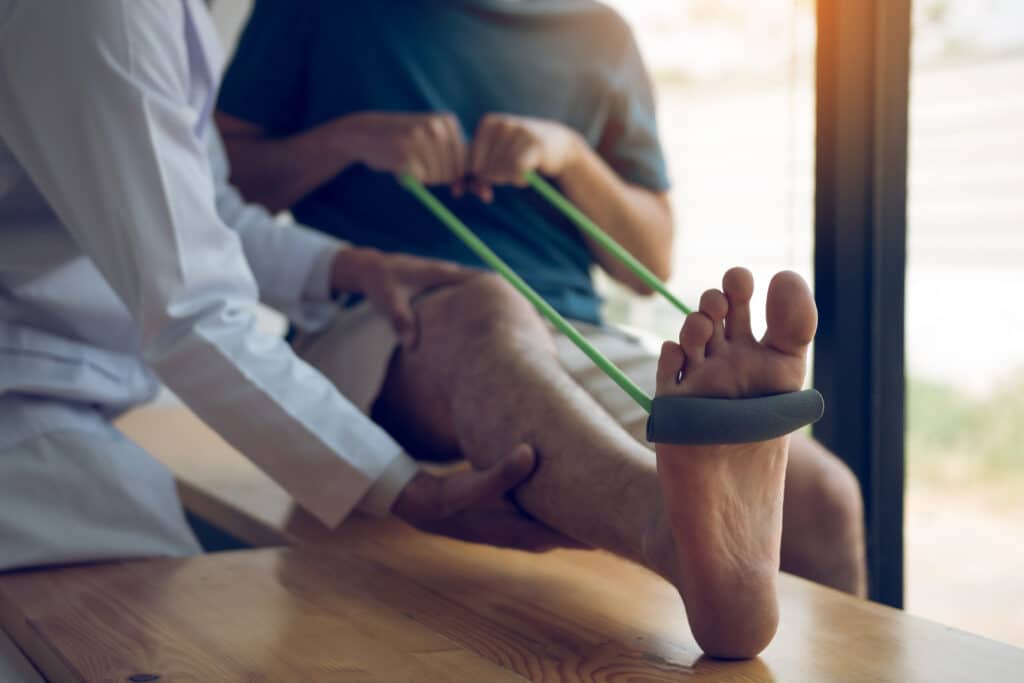
Although orthotics are helpful for many older adults when addressing the symptoms of various foot conditions, strength and mobility training can often address the root cause of your condition.
Many foot conditions are related to weakness of muscles in the foot and ankle or limited mobility of the foot and ankle joints. Some common exercise examples include foot strengthening, ankle mobilizations, and calf stretching.
Schedule an appointment with your physical therapist to determine whether exercise might be a more practical intervention for your needs.
Key Takeaways
- Orthotics are shoe inserts that provide cushioning and support, helping alleviate seniors’ foot pain.
- These devices redistribute forces under foot bones, reducing pain and encouraging symmetrical muscle activation.
- Orthotics can treat conditions like plantar fasciitis, pes cavus (high arches), and hallux valgus (bunions).
- While there’s some debate over their effectiveness, many users report improved comfort, reduced pain, and a better quality of life.
- There are two types of orthotics: over-the-counter (OTC) inserts and custom orthotics. The choice between them depends on individual needs and budgets.
- While more expensive, custom orthotics offer a personalized fit and are typically more durable than OTC.
- In addition to orthotics, strength & mobility training can address the root cause of foot conditions. It’s advisable to consult with a physical therapist for tailored advice.
If you are experiencing foot pain, talk to your doctor or schedule an appointment with your physical therapist. Relief may be as simple as finding the right orthotic for you.
FAQs
How often should orthotics be replaced?
The lifespan of orthotics varies depending on the material, daily wear and tear, and the wearer’s activity level. Generally, over-the-counter insoles may need to be replaced every six months to a year. Custom orthotics, being more durable, can last for several years. It’s important to replace them when they start to lose their structural integrity or become uncomfortable.
Can I use orthotics in any type of footwear, or are they specific to certain shoes?
Orthotics can generally be used with most footwear types with removable insoles. However, they may not fit or function properly in shoes with high heels or unusually narrow designs. Also, for athletic activities, specific sports orthotics might be recommended.
How long does it take to get used to wearing orthotics?
Adjustment periods for orthotics vary by individual. It could take a few days to a couple of weeks for your feet to get used to the new support and alignment. It’s often recommended to gradually increase the wear time over a week or two.
Are there any side effects or risks associated with the use of orthotics?
Most people tolerate orthotics well, but there can be potential side effects like discomfort or blisters during the adjustment period. If orthotics are not properly fitted, they can cause pain or worsen existing foot conditions. Always consult with a healthcare professional if new symptoms appear.
Can I ask my orthopedist to adjust uncomfortable custom orthotics?
Your doctor can often adjust orthotics if they’re causing discomfort or not fitting properly. If you’re having issues, it’s important to consult with the healthcare provider who prescribed them.
Are there any lifestyle changes or exercises that can complement orthotics?
Regular foot and leg exercises can help improve muscle strength and flexibility, which can complement the use of orthotics. Healthy habits like maintaining a healthy weight and wearing supportive, properly fitted shoes can also help manage foot-related issues. Always consult with a healthcare professional for personalized advice.

